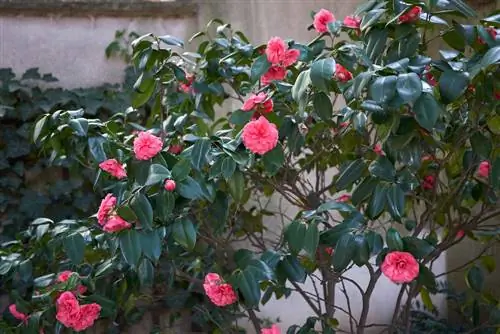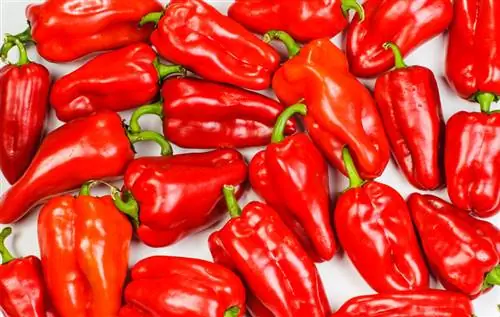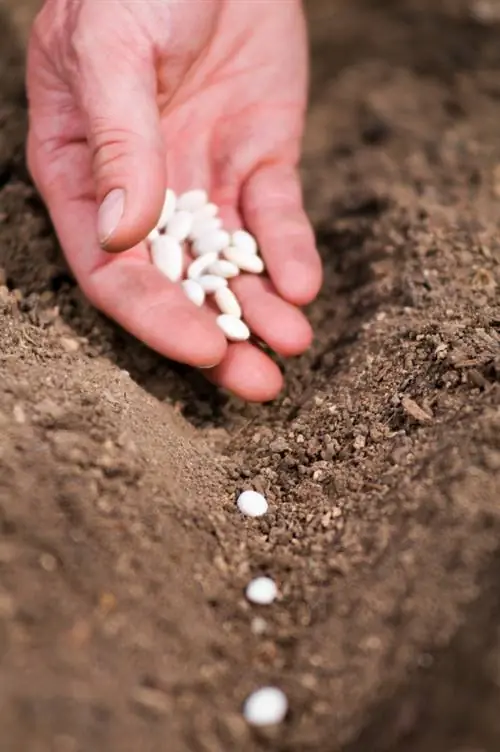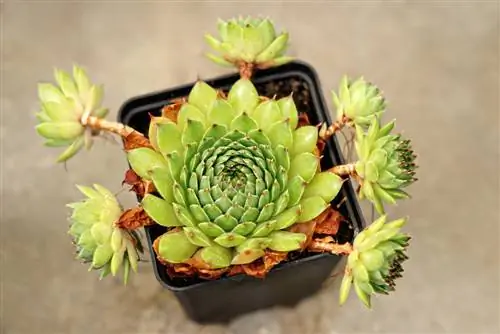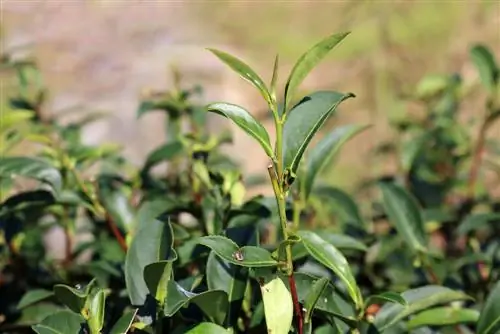- Author admin [email protected].
- Public 2023-12-16 16:46.
- Last modified 2025-01-23 11:21.
The camellia can hardly be described as really easy to care for, but it is not complicated to care for either. If the location and soil are correct, then at least the most important requirements for a long life of this very attractive plant are met.
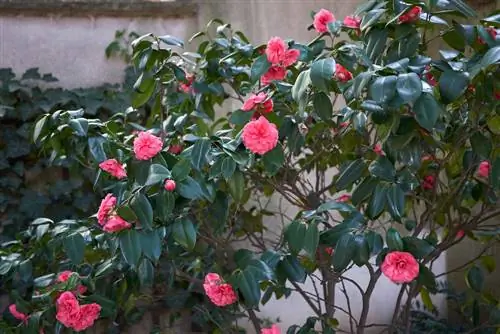
How do you properly care for a camellia?
To properly care for the camellia, it needs a partially shaded location, slightly acidic and moist soil, regular watering, fertilization from May to August and a cool, bright place to overwinter. Pests and diseases should be controlled and treated.
Location and soil
The camellia needs a lot of light so that its flowers can develop optimally. However, it shouldn't be too warm, because the camellia likes it rather cool. It does not tolerate midday sun very well in summer, nor does it tolerate morning sun in winter. Then it dries up easily. A location in light shade is therefore ideal.
The soil should be fresh to light and a little acidic. Therefore, you can combine the camellia well with rhododendrons or dogwoods, which have similar soil requirements as the camellia. Waterlogging should be avoided, as should the root ball drying out completely.
Planting and transplanting correctly
The camellia is ideal as a solitary plant, for example in a Japanese garden, but also for pot planting on a balcony or terrace. However, it doesn't feel very comfortable as a pure houseplant. An unheated winter garden, on the other hand, is almost ideal. Transplanting is usually not necessary outdoors, but should be done after flowering if necessary.
For planting outdoors, dig a hole that is at least twice as large as the root ball of your camellia and fill it about halfway with fresh rhododendron soil. Insert the plant and fill the planting hole completely with rhododendron soil. Additional fertilizer is then no longer necessary. Press soil firmly and water the camellia well.
The camellia in the pot
Even if you want to plant your camellia in a pot, you should use rhododendron soil. This will ensure that the soil has the required pH of around 4.5 to 5.5. As an alternative to this special soil, you can mix lime-free compost, peat and leaf mold in equal parts.
Water and fertilize camellias properly
During the growth phase and the flowering period, the camellia needs a lot of water. Then it should be watered regularly (about once a week) and abundantly, but in such a way that it does not become waterlogged.
The camellia needs fertilizer especially when it forms new buds, in most cases from May to around August. A rhododendron fertilizer is best suited, preferably in the form of a slow-release fertilizer.
Pruning camellias correctly
The camellia generally tolerates pruning quite well. Ideally it should take place in spring. Up to two thirds of the shoots may be cut off. However, always ensure that the overall appearance of the plant is harmonious.
The first thing to do when pruning is to remove dry and/or diseased shoots, preferably as soon as you notice them. After flowering, cut off the wilted inflorescences. The camellia is also suitable as a cut flower for the vase.
The camellia in winter
Camellias are generally not really hardy, but they can usually tolerate frost, at least for a short time. In a mild area (Rhine Valley or wine-growing region), the camellia can remain in the garden all year round with appropriate winter protection. However, it also needs sufficient water during this time so that the root ball does not dry out.
It is best to overwinter your camellia in a pot frost-free, but cool and bright, ideally in a greenhouse or winter garden that is not too warm. Without a cool winter break, the camellia will not bloom.
Diseases and pests
Pest infestation does occur on camellias. Mealybugs are relatively common. However, the white web on the leaves is easy to recognize, so you can react quickly to an infestation. Otherwise, a fungal infection may also occur. The sooty mildew fungus appears as a black coating on the leaves. Aphids, scale insects and thrips also occasionally appear on camellia.
The most important things in brief:
- Location: sunny to partially shaded, no morning sun in winter, no midday sun in summer
- Soil: slightly acidic and slightly moist
- evergreen
- Flowers: similar to peonies, up to 15 cm in diameter
- Flower color: white, pink or red
- Flowering time: between September and May depending on the variety and climate
- Flowering temperature: maximum 12 °C to 16 °C
- only conditionally hardy
- Wintering not above 10 °C
Tip
If you first and foremost ensure there is a suitable location and the right soil, then the rest of the camellia care will not be too difficult.

